A nail gun is one of the most effective and precise tools available for everyone. The device is a significant investment to any contractor in improving the quality of their job. However, like any other machine, it requires regular attention and maintenance for it to operate properly [1].
Oiling will result in rusting, which will cause jams, misfires, or air leaks in your firing mechanism. It would be best to oil your nail gun every time you use it.Do you have a nail gun and don’t know how to oil it? This blog post will teach you how! Many people don’t realize that oiling a nail gun is an important part of keeping it in good condition. Not only does oiling help keep the gun functioning properly, but it also helps to prevent wear and tear on the internal parts. In this blog post, our nail gun experts will discuss the best way to oil your nail gun and some tips for keeping it in good condition.
Why Does a Nail Gun Need Oil?
A nail gun needs oil to keep the moving parts lubricated. This helps to prevent corrosion and wear on the parts, which can lead to jams and misfires.
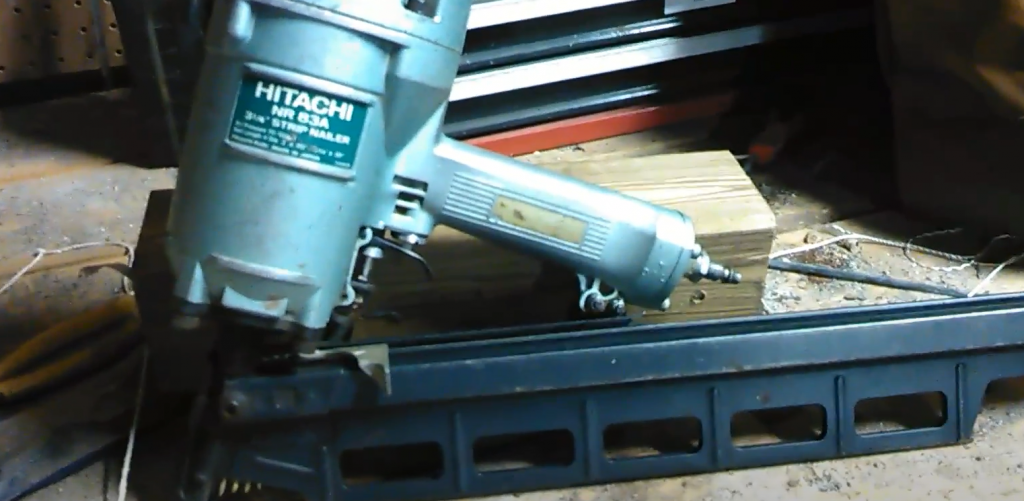
One of the primary reasons for using an oiling nail gun is to extend the life of your nailer. All nail guns include pistons. A piston is similar to a car engine in that it requires lubrication to function properly. If you don’t keep it lubricated on a regular basis, it won’t work effectively and won’t last long [2].
Another advantage is that it is smooth. It will remain smooth if you oil all of the joints. In addition, you want a smooth trigger that responds when you pull. It only occurs when you apply oil on a regular basis. Otherwise, after a long shift, it will get clogged up.
Last but not least, the feeding mechanism needs to be smooth. If you want it to operate when you pull the trigger and a nail sinks into the target, oil it.
Where Do You Put Oil In Nail Gun
Trigger
If the trigger becomes blocked, your device won’t work. You mustn’t allow it to happen if the trigger gets stuck. The performance and speed with which you do your task are dependent on the trigger, not jamming. Check the trigger on a regular basis to ensure it is moving at the appropriate speed and, if necessary, oil or tighten the screws.
Air Fitting
If you have a nail gun, oiling the main component of the air fitting mechanism twice a day is required. Oil your nails once every day before going to work for a fast and smooth tool.
You will enhance the longevity of your equipment by oiling it. You only need a single drop of oil in each spot:
- Place one drop of oil on each side of the trigger;
- Two drops where the air enters at the bottom;
- One more drop on top of the driver blade;
- Wipe away any excess with a clean cloth;
Feed System
The feed system also requires oil. However, be sure you’re using the correct oil. Otherwise, it may create debris. You should disassemble the feed system and clean it before reassembling and oiling it [3].
How Often Should You Oil Your Nail Gun?
All you need is a few droplets of oil. Place the oil in the air intake, near where your air hose connects to the tool. The frequency with which you oil your nail gun is determined by the machine’s specifications and how it will be used.
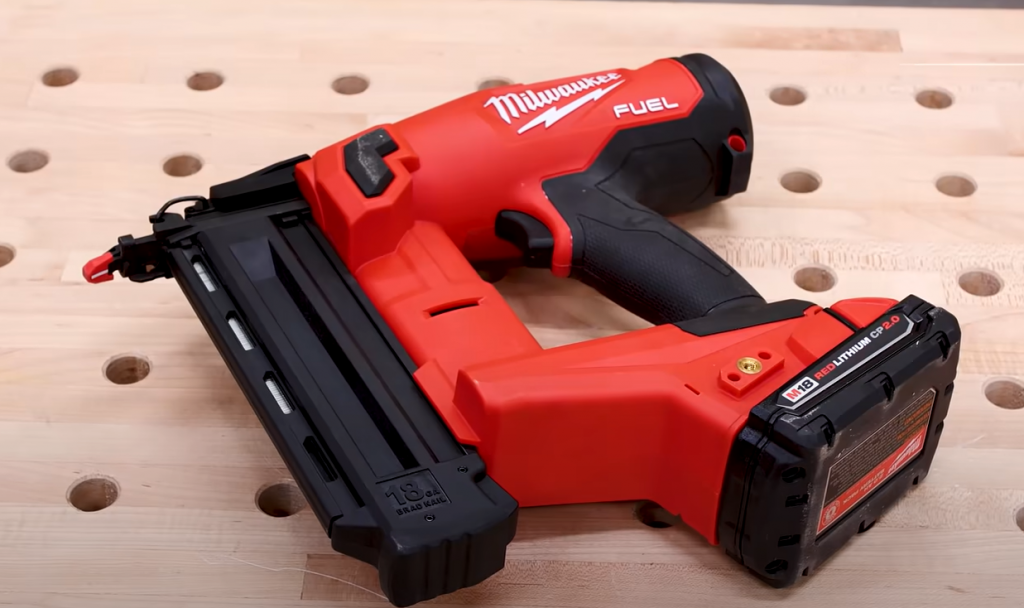
To ensure that the device operates smoothly and without any problems, it should be regularly lubricated for high-speed, high-cycle applications.
Every cycle includes air that travels through, therefore your tool must be lubricated for optimum performance [4].
Although many manufacturers recommend oiling throughout the day rather than at the end, it’s generally better to apply lots of oils at once. It is suggested that you oil the tool every two or three drops for each shift. If a tool isn’t utilized for a lengthy amount of time, before using it again, apply oil to it.
What Kind Of Oil Should You Use In Your Nail Gun
Paslode
All pneumatic air tools including most nail guns can be lubricated with the Paslode Pneumatic tool lubricating Oil. This lubricating oil is formulated to endure the forces of pneumatic operation while also preserving your equipment [5].
Bostitch
Bostitch lubricants and oils are suited for all pneumatic tools that require oil. Their all-season and winter lubricants allow you to work in any weather, even in the coldest conditions [6].
Porter Cable
Porter Cable produces a variety of oils, greases, and lubricants that can be used in pneumatic tools. Their mineral-based air tool oil is designed to protect your equipment while also extending its life.
While there are many different brands and types of oils that you can use in your nail gun, it is important to consult your owner’s manual to see what is best for your particular model. Different models of nail guns may require different types of weights of oil, so it is important to check before adding any oil to your machine.
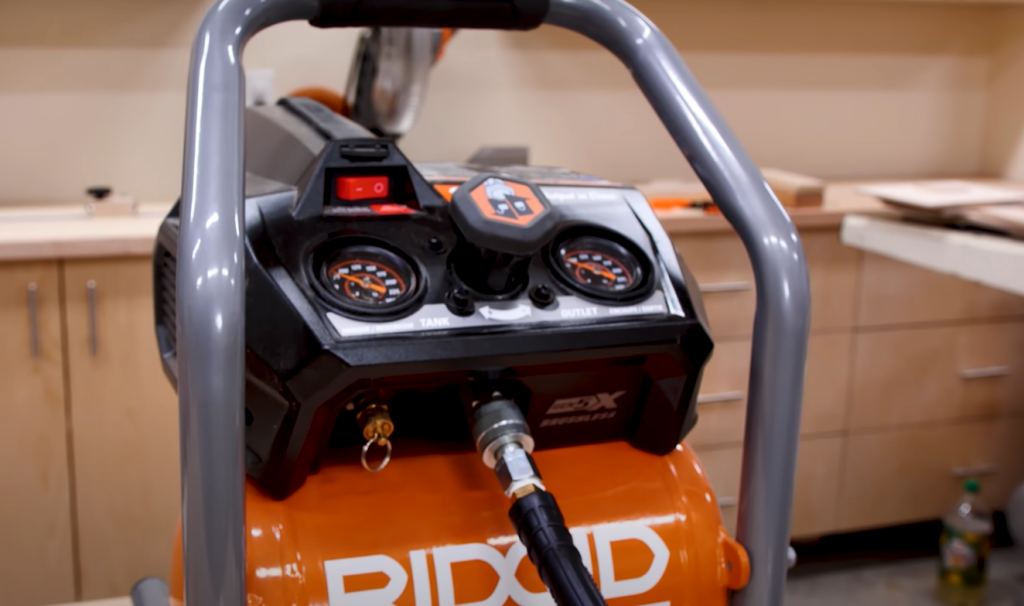
Use the oil specified in the user guide for your nail gun. Using the incorrect sort of oil can damage parts of the nailer, create corrosion in moving components, and even cause a fire if you have a pneumatic nail gun. Only use pneumatic oil with a pneumatic nail gun.
Nevertheless, depending on the type of gun you have, use a different oil during the winter and summer seasons. To prevent the oil from solidifying in colder climes, some special oils include antifreeze in their formulations [7].
Consider using the highest-quality oils, which are simple to apply and combat rust, prevent blowout, dissolve debris, and resist harming your rubber seals. It’s best to stay away from using WD-40, compressor oil, three in-1 oil, or other non-pneumatic tool lubricants.
Easy Steps to Oil a Nail Gun
Disconnect The Power Source
To begin, unplug the nail gun from the wall outlet. If you’re using an air compressor, remove the hose as well.
Locate The Oil Reservoir
This is frequently a tiny hole or opening near the rear of the gun that may be covered by a little cover.
Check The Oil Level
Every time you fire up your nail gun, you should check the oil level. Simply remove the oil cap and look inside to see if the oil level is adequate.
Add Oil
If the oil level is low, add just a few drops of oil. You don’t want to over-oil the nail gun as this can cause problems.
Check For Leaks
When using your nail gun, always check for leaks first.
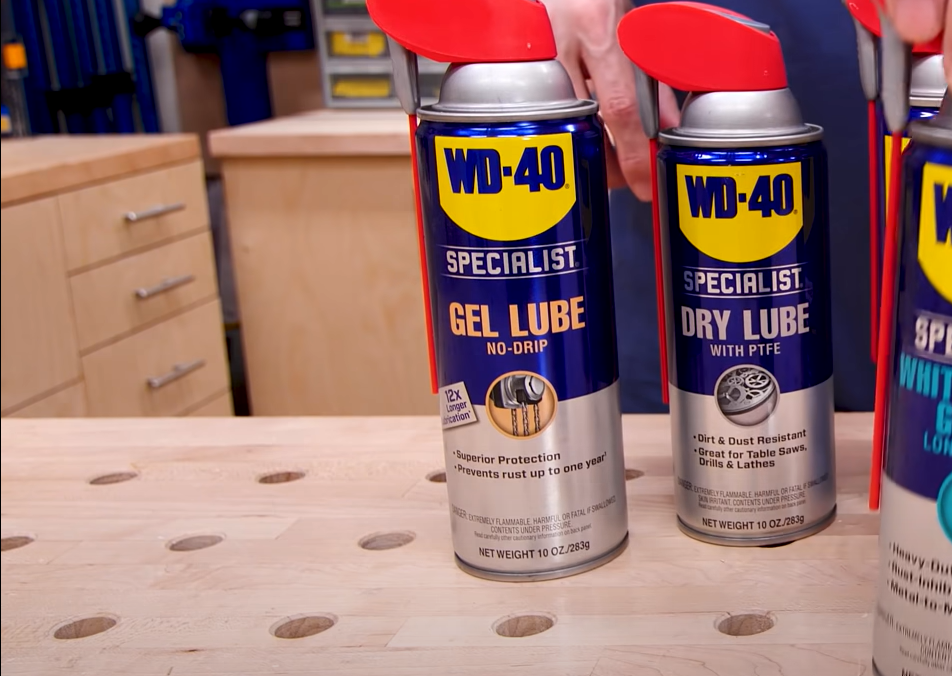
Simply apply a few drops of oil to your finger and then touch the end of the tool. If any oil appears on your finger, there is a leak.
Clean The Nozzle
Your nail gun’s nozzle will eventually get clogged with oil and debris over time. Simply remove the nozzle and soak it in warm water and dish soap solution to clean it.
Lubricate The Trigger Mechanism
The trigger mechanism is what allows you to fire the nail gun. You’ll want to lubricate this area with oil on a regular basis to keep it working properly.
Clean The Air Filter
Oil and debris can accumulate in your nail gun’s air filter. Simply remove the air filter and soak it in a bath of warm water and dish soap to clean it.
Put It All Back Together
After cleaning and lubricating your nail gun, return everything to its original state and make it ready to use [8].
The Best Nail Gun Oil Substitutes
Hydraulic Oils
Hydraulic oils are one of the most popular nail gun oil replacements. This oil has certain desirable characteristics that make it appropriate for lubrication. The hydraulic oil, like other low-viscosity oils, has a lower boiling point. Any lubricant’s viscosity is an important characteristic.
It gives information to the fluid-flowing fluency without difficulty or obstruction. The lower the viscosity of the substance, the higher its density. It aids in the smoother flow of oil. As a result, hydraulic oil is an excellent option for areas where temperatures are low [9].
Another significant advantage of hydraulic oil is that it’s affordable.
ATFs Or Automatic Transmission Fluids
The ATFs are especially great as a substitute for nailer oil owing to their superior performance in many applications. They come with a variety of features and provide several advantages by serving as a hydraulic medium. These automatic transmission fluids also keep the components clean and free from deposits.
The primary reason for the need for coolant is that these fluids resist tearing, wear, and any breakdown of mechanical components. However, because of their fantastic qualities, ATFs are widely utilized in car transmissions. Your nail gun also requires these fluids since it has the same desire as pressure and stress relief.
ATFs also have a lower pour point, which ensures that the oil can flow smoothly at any temperature. The pour point is defined as the lowest temperature at which an oil will flow.
Lubricants with a low pour point are highly desirable because they can function well even in extremely cold environments. For this reason, you may use ATFs to lubricate your nail gun regardless of whether it’s hot or cold outside.
One significant advantage of using ATF over other oils is its ability to keep components clean. This quality is essential for the proper functioning of your nailer since it prevents deposits from building up and clogging the system. Additionally, ATFs prevent corrosion and rust by keeping moisture away from metal surfaces.
Synthetic Oils (Or Engine Oils)
These chemical compounds have been manufactured by man. Because they go through a number of steps, they are extremely refined oils and one of the finest alternatives to nailer oil.
Synthetic oils are ideal for nail guns since they can withstand higher or lower temperatures. As a result, your power tool’s compressor and motor are safe from heat overloading. Synthetic oils also have noise cancellation abilities, which makes them more acceptable.
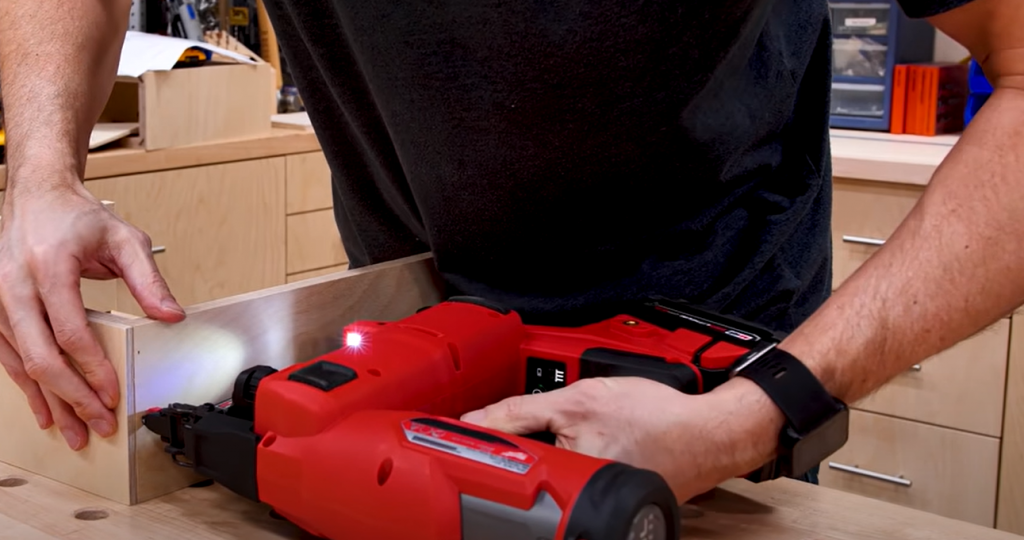
The main benefit of using synthetic oils is that they can lubricate your nail gun much better than other oils. This advantage is due to the fact that these oils have a lower coefficient of friction. The lower the coefficient of friction, the smoother the oil flows and the better it lubricates.
They also have a higher flash point, which means they can withstand higher temperatures before igniting.Properties That Should Contain The Substitutes
Viscosity
The first property to consider when finding a replacement for nail gun oil is its viscosity. The oil needs to be thin enough to flow easily through the tiny passages in the gun, but thick enough that it won’t evaporate quickly or leak out. You can usually find the right viscosity by checking the product label or looking for oils specifically designed for use in air tools.
Oil with low viscosity will be thinner than oil with a high viscosity. However, the majority of nail guns utilize 20W or 30W oil viscosity. They’re designed specifically for use with air compressors. Substitutes in this viscosity can be used to repair nail guns.
Temperature
The viscosity of a substance is also influenced by temperature. The viscosity varies depending on the change in environmental temperature. As a result, maintaining a proper balance between temperature and oil viscosity is critical.
However, in chilly regions, it’s preferable to use less-weight oil [10].Additives Or Supplements
Many chemicals are used in the production of most nail gun oil alternatives. These might be either helpful or harmful to your equipment. Detergent, on the other hand, has already been proven to be the most dangerous of all additives. So, proceed with caution.
FAQ
What can I use to oil nail guns?
To oil your nail gun, you can use any type of light machine oil such as sewing machine oil or three-in-one oil. You can also use WD-40, although this is not as effective as a dedicated lubricant.
How often should I oil my nail gun?
You should aim to oil your nail gun every time you use it, or at least once a week if you don’t use it regularly. This will help to keep the moving parts clean and prevent rusting.
Do you need to lubricate a nail gun?
Oil-based nailers need regular oiling to function properly. Each time you work with the tool, add a few droplets of oil into the air intake to reduce heat and friction and protect valves, seals, and O-rings from wearing out. You should oil the tool more frequently during heavy usage [11].
Can you use WD40 on a nail gun?
It’s also vital to remember that pneumatic nailers and staplers require specific pneumatic tool oil, which is often designated as such. Do not apply WD40, engine oil, transmission fluid, or aerosol lubricants [12].
Where do you put oil in a nail gun?
To oil your nail gun, you should add a few drops of oil into the air intake. Each time you work with the tool, add a few droplets of oil into the air intake to reduce heat and friction and protect valves, seals, and O-rings from wearing out [13].
Do you have to oil a pneumatic nail gun?
Many individuals neglect to oil their nail guns on a regular basis, and they have no clue how to oil one until it breaks down. It’s critical that you understand how to maintain your equipment, especially the pneumatic nail gun.
Oiling your gun on a regular basis is beneficial, yet overdoing it can be detrimental. If your nail gun is too oily, it will leak oil or become too slippery to perform the task. When you oil a nail gun, there’s a science behind when to do so.
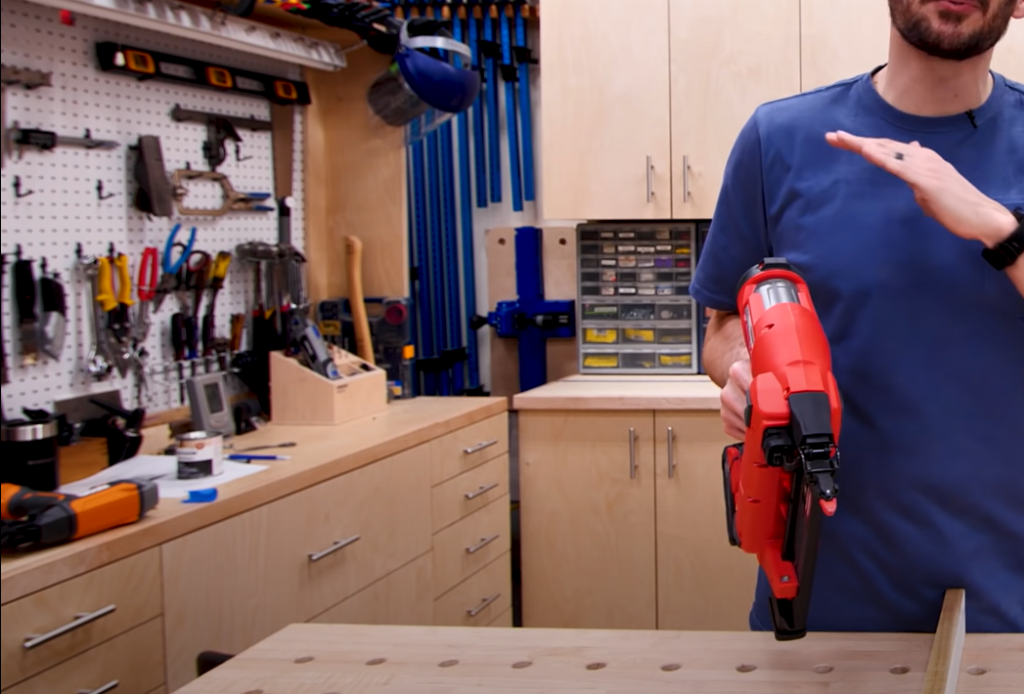
To ensure that the pneumatic nail gun works properly and efficiently, it must be oiled on a regular basis. To keep the tool in good working order, several drops of oil should be applied before or after usage. You can use a few droplets of oil before loading the next nail strip on the nailer to extend its life and provide more service. Before you put the second nail strip on, apply some oil to prevent it from sticking together.
Why does my nail gun keep jamming?
If your nail gun keeps jamming, it is likely due to a lack of oil. Most nail guns require oil to function properly, and without it, the gun can become jammed. You should check your owner’s manual to see how often you need to oil your particular model of nail gun. In general, however, you should oil your nail gun every time you use it.
Can you oil an oil-free nail gun?
Yes, you can oil an oil-free nail gun. However, you should check your owner’s manual to see what type of oil is recommended for your particular model of nail gun. Some oils may damage the gun or void the warranty. If you’re not sure which oil to use, you can always contact the manufacturer for guidance.
How do you lubricate a nail gun with Paslode?
To oil a nail gun with Paslode lubricator, you should remove the battery and unscrew the cap from the oil reservoir. Insert the straw that comes with the oil can into the opening and squeeze the trigger to release a few drops of oil. Reattach the battery and screw on the cap before using the nail gun again [14].
How do you fix a nail gun that won’t fire?
If your nail gun won’t fire, there are a few things you can do to try and fix the problem:
- First, check to see if the battery is properly installed and charged;
- Next, check the air compressor to make sure it’s turned on and working properly;
- Finally, check the oil reservoir to see if it needs more lubrication;
How do you clean a nail gun?
You ought to clean your nail gun after each use. You can do this by using a brush or compressed air to remove any debris from the gun. You should also oil your nail gun regularly to keep it working properly.
Useful Video: Best Way To Oil Your Nail Gun or Air Tool
References:
- https://nelsgarage.com/how-to-oil-a-nail-gun/
- https://thetoolstrunk.com/how-to-oil-a-nail-gun/
- https://www.nailgundepot.com/blog/how-to-oil-an-air-nailer.html
- https://nelsgarage.com/how-to-oil-a-nail-gun/
- https://paslode.ca/product/pneumatic-tool-lubrication-oil/
- https://www.bostitch.com/products/accessories/lubricants-and-oils
- https://nelsgarage.com/how-to-oil-a-nail-gun/
- https://toolsprokit.com/how-to-oil-a-nail-gun/
- https://solvesonic.com/nail-gun-oil-substitute
- https://solvesonic.com/nail-gun-oil-substitute
- https://www.senco.com/senco-blogs/oiled-vs-oilless-nailers
- https://www.nailgundepot.com/blog/how-to-avoid-destroying-your-pneumatic-nailer-blog.html
- https://sawmillcreek.org/showthread.php?151423-Dumb-question-Where-to-oil-my-nail-gun
- https://zukzik.com/oil-to-use-for-your-nail-gun/
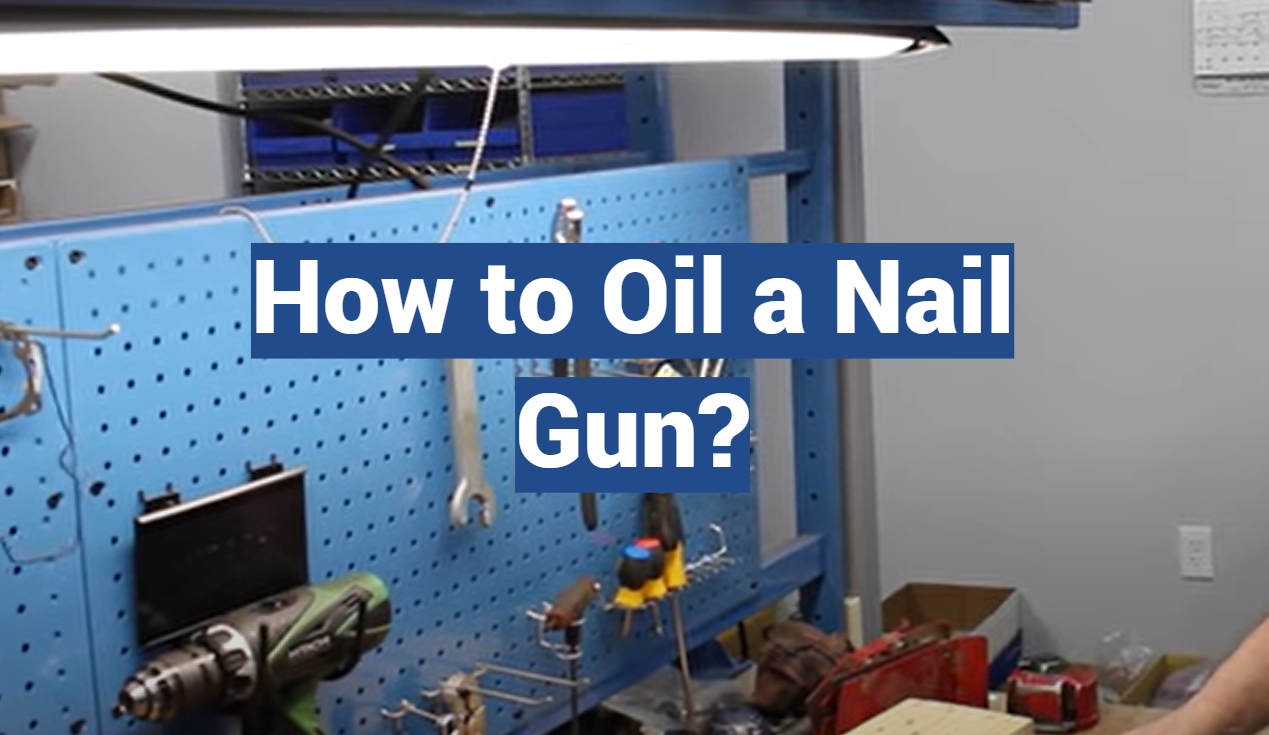
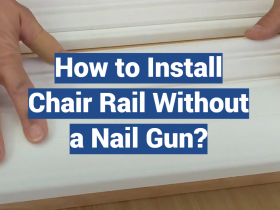

Leave a Reply